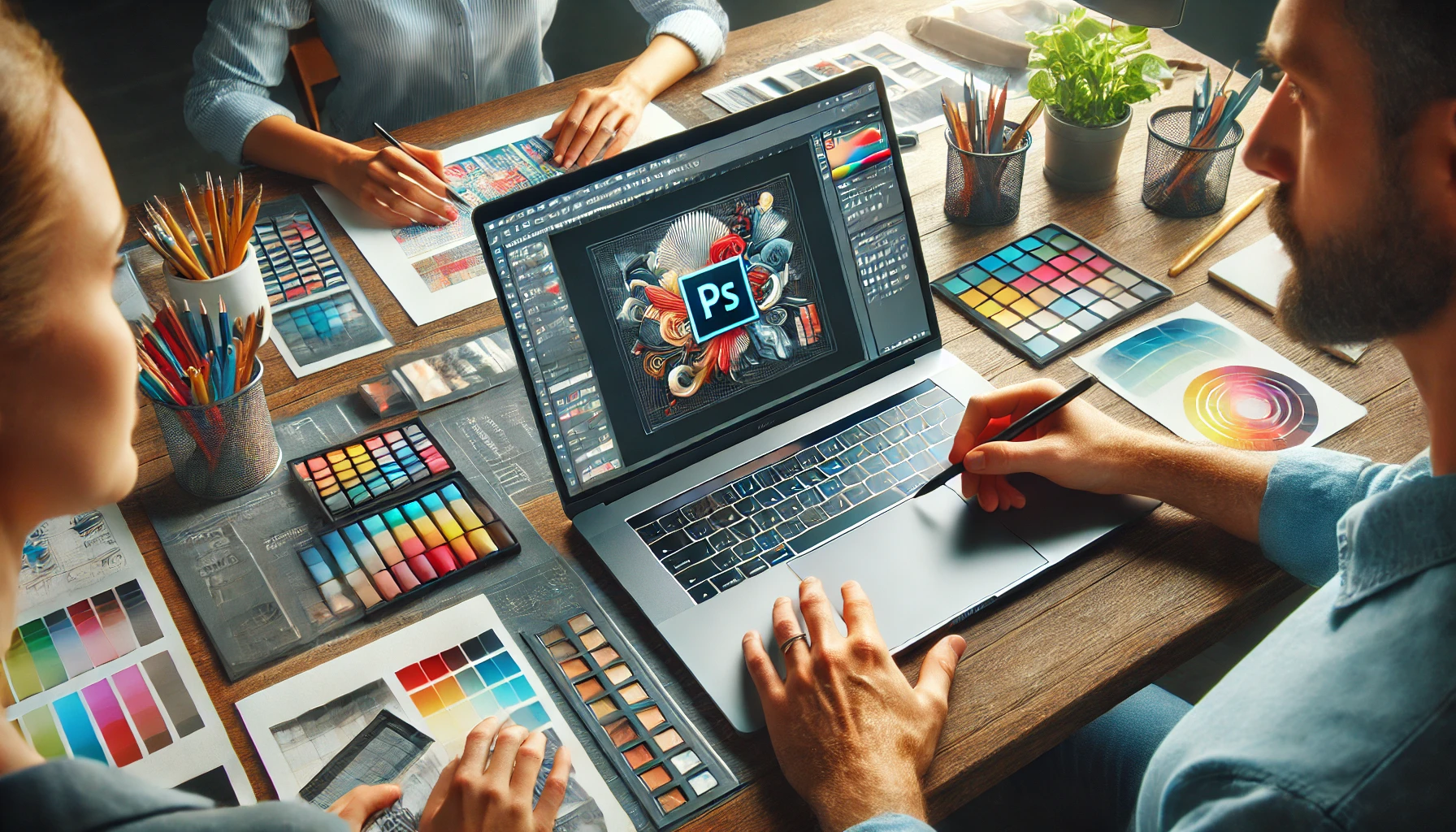Adobe Photoshop is one of the most powerful tools for graphic designers, but mastering it can be challenging. Fortunately, with some simple practices and useful tricks, you can enhance your skills and create more professional and creative work.
In this article, you’ll find 10 quick and practical tips to help you level up your Photoshop expertise, regardless of your experience level.
1. Use Keyboard Shortcuts
Shortcuts save time and make your workflow more efficient. Here are some of the most useful ones:
- Ctrl + T (Cmd + T on Mac): Transform.
- Ctrl + J (Cmd + J on Mac): Duplicate layer.
- B: Brush tool.
- Z: Zoom tool.
- Alt + Scroll: Zoom in and out.
💡 Tip: Memorize the shortcuts for the tools you use most often to speed up your projects.
2. Work with Layers
Organizing your project into layers is essential for a clean and editable design.
- Name your layers: Helps identify each element in the layout.
- Use groups: Group related layers (Ctrl + G or Cmd + G on Mac).
- Adjust opacity: Play with transparency to create interesting effects.
💡 Tip: Always convert important elements into smart layers for non-destructive editing.
3. Experiment with Color Adjustments
Adjusting colors can transform an ordinary design into something visually striking.
- Curves (Ctrl + M): Enhance contrast and adjust lighting.
- Hue/Saturation (Ctrl + U): Change hues or intensify colors.
- Adjustment layers: Add non-destructive adjustments to preserve the original.
💡 Tip: Combine different adjustments to create unique and professional tones.
4. Use Layer Masks
Masks are indispensable for precise editing.
- Creating a mask: Click the mask icon at the bottom of the layers panel.
- Usage: Paint with black to hide areas and with white to reveal them.
- Combine with gradients: For smooth transitions.
💡 Tip: Masks allow you to reverse changes easily without permanently deleting elements.
5. Experiment with Blending Modes
Blending modes alter how one layer interacts with the others.
- Multiply: Darkens the design, ideal for shadows.
- Screen: Lightens darker areas.
- Overlay: Combines light and contrast for highlighting.
💡 Tip: Experiment with different modes to discover new creative effects.
6. Make the Most of Filters
Filters are great for adding unique effects to your projects.
- Gaussian Blur: Softens edges or creates a depth effect.
- Noise: Adds texture for a more realistic look.
- Camera Raw Filter: Adjust lighting, contrast, and color with precision.
💡 Tip: Explore the Filter > Filter Gallery menu to try out different styles.
7. Use Plugins and External Resources
Plugins and external resources save time and expand your possibilities.
- Plugins: Install tools like the Nik Collection for advanced adjustments.
- Custom Brushes: Download brush sets for specific effects.
- Free Textures: Sites like Unsplash or Pexels offer textures that can be incorporated into Photoshop.
💡 Tip: Organize your resources in folders for easy access.
8. Take Advantage of Text Features
Well-designed text improves communication in your design.
- Text Tool (T): Use it for creating titles and captions.
- Paragraph adjustments: Align, justify, or adjust spacing.
- Layer Effects: Add shadows, strokes, or glows to highlight text.
💡 Tip: Experiment with font combinations to create visual hierarchy.
9. Master the Pen Tool
The Pen Tool is essential for creating precise shapes and perfect cutouts.
- Creating paths: Draw smooth lines for detailed outlines.
- Converting to selection: Use the path to select specific areas.
- Customization: Adjust curves with anchor points.
💡 Tip: Practice with the Pen Tool to cut images with precision.
10. Save Files in Different Formats
Saving in the correct format is crucial to maintain design quality.
- PSD: Preserves layers for future editing.
- PNG: Ideal for images with transparent backgrounds.
- JPEG: Best for social media uploads or web use.
- TIFF: Suitable for high-quality prints.
💡 Tip: Always save a PSD copy before exporting to other formats.
Common Photoshop Mistakes (And How to Avoid Them)
- Editing the wrong layer: Always double-check you’re on the correct layer before making changes.
- Ignoring Masks: Avoid erasing elements directly; use masks to preserve the original.
- Forgetting to Save: Enable auto-save to avoid losing progress.
Recommended Tools and Resources
- Adobe Creative Cloud: For accessing updates and other apps.
- Envato Elements: For downloading exclusive brushes, textures, and actions.
- YouTube Tutorials: Channels like Phlearn teach advanced techniques.
Ready to Enhance Your Skills?
With these 10 tips, you can transform your projects in Photoshop and work more efficiently and creatively. Practice regularly, explore new tools, and never stop learning!

